Welcome to our article on Bacopa australis, the remarkable aquatic plant that brings life and vibrancy to underwater environments.
Whether you’re a seasoned aquarium enthusiast or just beginning your journey in the world of aquatics, Bacopa australis is a plant that will surely captivate you with its lush foliage and graceful appearance.
In this article, we will explore the various aspects of Bacopa australis, including its growth and maintenance in home aquariums, its benefits to aquatic ecosystems, and its role in aquascape design.
By the end of this article, you will have a comprehensive understanding of Bacopa australis and why it is a valuable addition to any aquatic setting.
Key Takeaway
- Bacopa australis is a versatile, beginner-friendly aquatic plant that thrives in home aquariums.
- It contributes to aquatic ecosystems’ overall health and aesthetic appeal by absorbing nitrates and providing shelter for aquatic fauna.
- Bacopa australis can be creatively incorporated into aquascape designs, adding depth and texture to the underwater environment.
- Proper care and maintenance, including providing adequate lighting and appropriate water conditions, are essential for the healthy growth of Bacopa australis.
- Bacopa australis is a native Australian plant that has gained worldwide popularity among aquarists due to its beauty and ease of care.
Quick Stats
| Attribute | Details |
| Family Name | Plantaginaceae |
| Origin | South America |
| Height | 10-30 cm (4-12 inches) |
| pH Range | 6.0 – 7.5 |
| CO2 Requirement | Low to Moderate |
| Growth Rate | Moderate |
| Care Level | Easy |
| Color Form | Bright Green |
| Water Conditions | 22-28°C (72-82°F), soft to moderately hard water |
| Max Size | Can grow up to 30 cm (12 inches) tall |
| Lighting | Moderate to High |
| Supplements | CO2 fertilization beneficial, along with a comprehensive liquid fertilizer |
| Placement | Mid-ground to Background |
| Propagation | Stem cuttings |
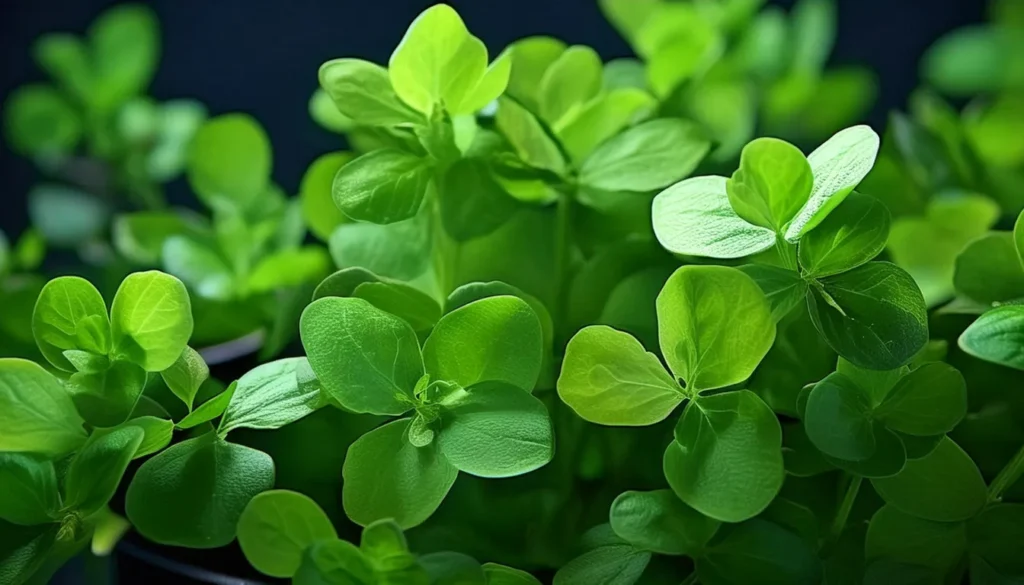
What Is Bacopa Australis?
Bacopa australis, also known as Water Hyssop, is an aquatic plant native to Australia. It is a perennial plant that thrives in both submerged and emergent conditions.
Bacopa australis is characterized by its delicate, bright green leaves that grow in opposite pairs along its stem.
It can reach a height of up to 20 inches and forms dense clusters of foliage. The plant’s compact growth habit and vibrant appearance make it popular for aquascaping enthusiasts.
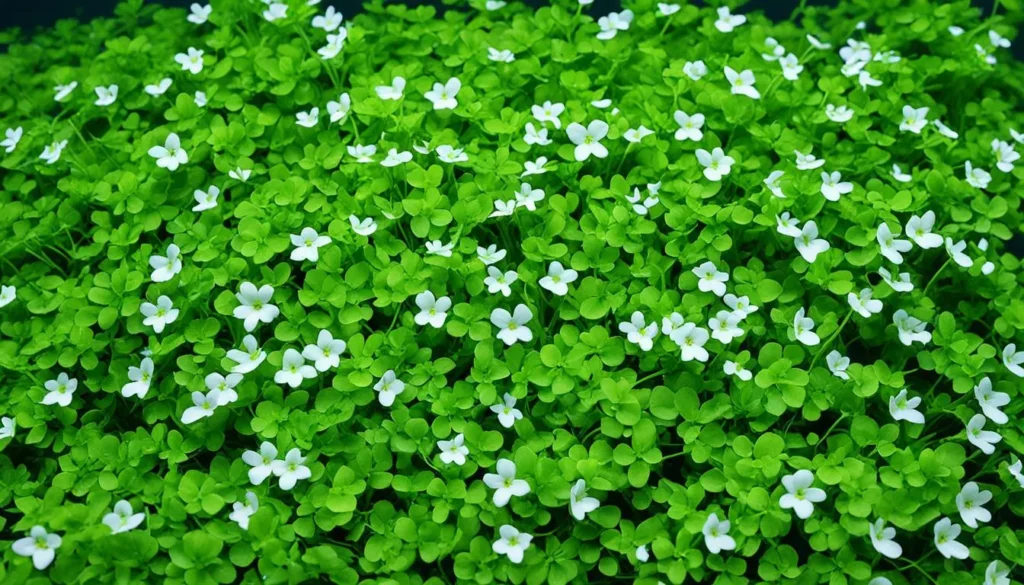
Natural Habitat And Origin
Bacopa australis is a species of aquatic plant native to Australia, as its name suggests. It typically grows in marshes, streams, and other freshwater habitats throughout Australia.
Bacopa australis is well adapted to various aquatic environments, often found submerged or growing along the edges of water bodies where it can receive ample sunlight.
In its natural habitat, Bacopa australis plays an important ecological role, providing habitat and food for various aquatic organisms.
This plant is also popular among aquarium hobbyists due to its attractive appearance and ease of cultivation.
Physical Characteristics Of Bacopa Australis
- Leaves: The leaves of Bacopa australis are typically small, oblong or lanceolate in shape, and arranged oppositely along the stem. They have a smooth texture and are usually light green in color, sometimes with reddish undertones.
- Stem: The stems of Bacopa australis are slender, trailing, and can grow to varying lengths depending on environmental conditions. They are often flexible and may sprawl along the substrate or float near the water’s surface.
- Roots: Bacopa australis has a well-developed root system that anchors the plant in the substrate. The roots are typically thin and white, extending from the nodes along the stems.
- Flowers: Bacopa australis produces small, delicate flowers that emerge from the leaf axils along the stem. The flowers are typically white or pale blue in color and have five petals arranged in a star-like shape.
- Growth Habit: Bacopa australis exhibits a creeping or trailing growth habit, with stems that can spread horizontally along the substrate or float near the water’s surface. It can form dense mats of vegetation in suitable aquatic environments.
Managing Light To Promote Healthy Foliage
- Proper lighting is essential for the healthy growth of Bacopa australis. While it thrives in moderate to high lighting intensity, excessive light exposure can lead to unwanted algae growth. To maintain a healthy balance, providing 8 to 10 hours of light per day is recommended.
- Using a timer for your aquarium lights can help establish a consistent lighting schedule. This will ensure that Bacopa australis receives the necessary light for photosynthesis while preventing prolonged exposure that can encourage algae growth. Additionally, monitor the intensity of the light to ensure it falls within the optimal range for this plant’s needs.
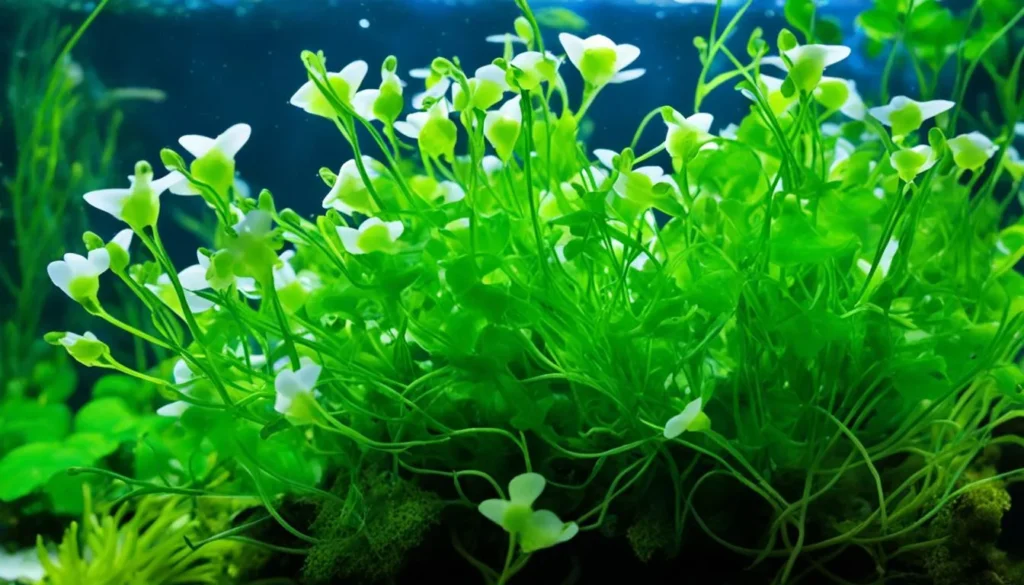
Water Conditions And Substrate
- It is important to provide a suitable environment to maintain optimal conditions for Bacopa australis. The water temperature should be between 68 and 82 degrees Fahrenheit to promote healthy growth. The pH level should also be kept neutral to slightly acidic, with a range of 6.5 to 7.5. These conditions mimic the natural habitat of Bacopa australis and facilitate its growth and overall well-being.
- When it comes to lighting, Bacopa australis thrives in moderate to high light conditions. Providing approximately 2 to 3 watts per gallon of fluorescent lighting is recommended. This ensures that the plant receives sufficient light energy for photosynthesis and encourages robust growth.
- Choosing the right substrate is crucial for Bacopa australis. A nutrient-rich material, such as aquarium soil or a mix of aquatic plant substrate and gravel, provides essential nutrients to support its growth. The substrate should be fine enough to anchor the plant’s roots securely, allowing water to flow easily.
Temperature Parameters For Bacopa Australis
- Temperature Range: Bacopa australis can tolerate temperatures ranging from approximately 18°C to 28°C (64°F to 82°F). This range encompasses typical tropical aquarium temperatures.
- Optimal Temperature: The ideal temperature for Bacopa australis falls within the range of 22°C to 26°C (72°F to 79°F). Within this range, the plant tends to exhibit its best growth and overall health.
- Temperature Consistency: While Bacopa australis can tolerate fluctuations in temperature to some extent, it generally prefers consistent conditions. Sudden or extreme temperature changes can stress the plant and negatively impact its growth.
- Seasonal Adjustments: If keeping Bacopa australis in an outdoor pond or container during the warmer months, ensure that temperatures remain within its preferred range. In colder climates, consider moving the plant indoors or providing winter protection to prevent damage from freezing temperatures.
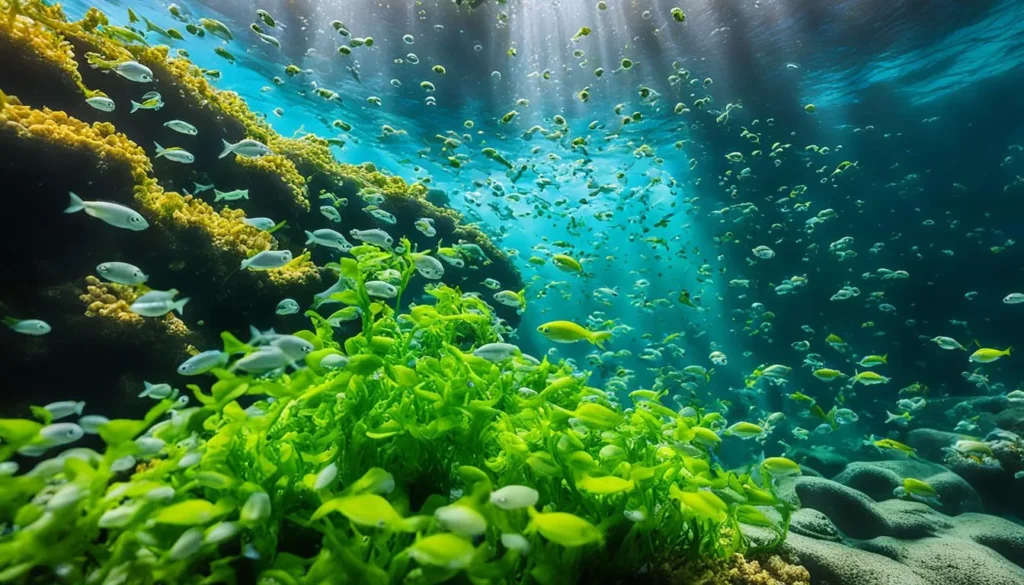
Designing Aquascapes With Bacopa Australis
- Bacopa australis is a versatile plant that can be used to create visually striking aquascapes. Its lush foliage and graceful appearance make it an excellent choice for adding depth and texture to an aquarium.
- When designing an aquascape with Bacopa australis, consider combining it with plants of different leaf shapes, such as sword-like leaves or fern-like fronds, to create visual interest and variety.
- Additionally, you can create contrasts in texture and color by pairing Bacopa australis with plants that have different foliage textures and colors. For example, combining it with fine-leaved plants or plants with vibrant red or purple hues can create a stunning visual effect.
RELATED: Aquascaping With Anubias Barteri For A Creative Aquascape
Planting Techniques For Optimal Growth
- When planting Bacopa australis, handling the plants carefully is crucial to avoid damaging the delicate stems and leaves. Gently separate the individual stems and plant them in the substrate, ensuring that each stem is securely planted. Spacing the plants apart allows for proper growth and prevents overcrowding.
- Regular maintenance is necessary to ensure Bacopa australis’s continued health and growth. This includes trimming any dead or decaying leaves and removing any debris that may accumulate in the aquarium. Regular water changes and nutrient supplementation through fertilization will provide the plant with the necessary resources to thrive.
Recommended Tank Size
- Small to Medium Tanks: Bacopa australis can thrive in tanks ranging from 10 gallons (about 38 liters) to 50 gallons (about 190 liters). In smaller tanks, it can be used as a midground or background plant, while in larger tanks, it can be utilized as a foreground or midground plant.
- Space Consideration: Ensure that the tank size allows enough space for Bacopa australis to spread and grow without overcrowding. This promotes healthy growth and prevents shading of other plants.
- Aquascape Layout: Incorporate this plant into the aquascape layout based on its growth habits and height. Plant taller specimens towards the back or sides of the tank to create depth and visual interest.
- Population Density: Consider the population density of this plant and other plants in the tank to avoid excessive competition for nutrients and space. Provide adequate spacing between individual plants to prevent overcrowding.
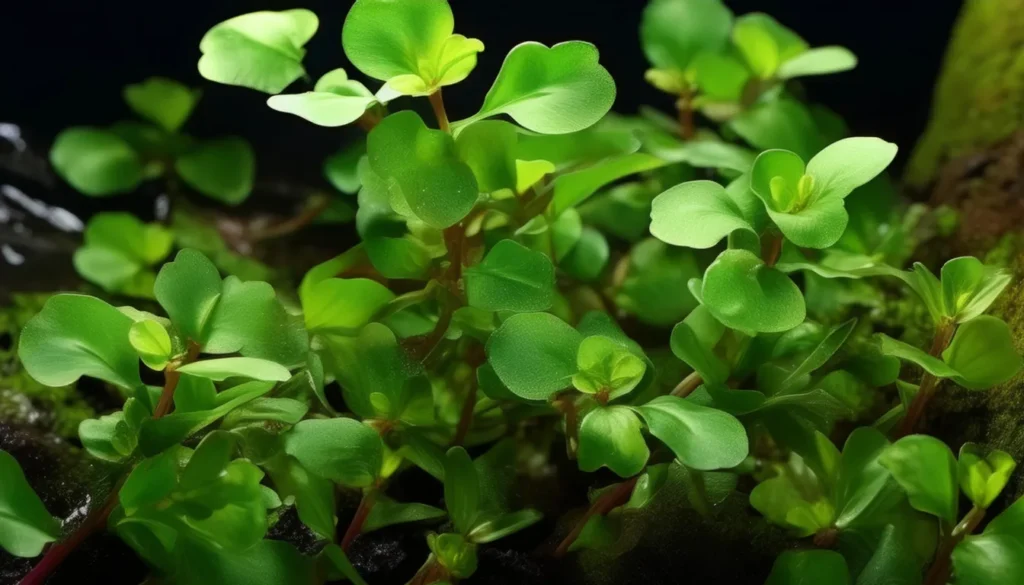
Integrating Bacopa Australis With Aquatic Fauna
Bacopa australis is compatible with a wide range of aquatic fauna, including various fish species and shrimp.
The dense foliage of Bacopa australis provides hiding places and shelter for fish, especially smaller or more timid species.
It also offers grazing opportunities for shrimp, as they can feed on microorganisms and algae that grow on the plant’s leaves.
When integrating it with aquatic fauna, consider the specific care requirements and behavior of the fish and shrimp species in your aquarium to ensure a harmonious and thriving ecosystem.
Nutritional Requirements And Fertilization
- It relies on a balanced supply of essential nutrients for healthy foliage growth. Nitrogen, potassium, and trace elements are particularly important for its overall well-being. Regular fertilization with a liquid aquarium plant fertilizer that contains these essential nutrients can provide the necessary elements for Bacopa australis to thrive.
- When fertilizing, it is crucial to follow the recommended dosage instructions provided by the manufacturer. Overfertilization can lead to nutrient imbalances and negatively impact the plant’s growth. Be sure to monitor the plant’s response to the fertilizer and adjust the dosage accordingly.
Cultivation
- Pruning: Trim Bacopa australis regularly to control its growth and prevent overcrowding. Remove any yellowing or decaying leaves to maintain plant health and aesthetics.
- Propagation: Propagate this plant by taking stem cuttings and replanting them in the substrate. This encourages bushier growth and helps rejuvenate older plants.
- Pest and Disease Control: Monitor it for signs of pests such as snails or aphids, as well as diseases like fungal infections or rot. Treat any infestations promptly using appropriate remedies to prevent spreading to other plants.
Propagation Tips
- Select Healthy Specimens: Choose healthy Bacopa australis plants with vibrant foliage and strong stems for propagation.
- Take Stem Cuttings: Use sharp, clean scissors or pruning shears to take stem cuttings from the parent plant. Cut stems that are at least a few inches long, making sure to include several leaf nodes along the stem.
- Remove Lower Leaves: Trim off the lower leaves from the stem cutting, leaving only a few leaves at the top. This helps reduce the risk of rotting and encourages new root growth.
- Plant Stem Cuttings: Plant the stem cuttings in the substrate of the aquarium or pond, ensuring that the cuttings are buried securely but not too deeply. Space the cuttings adequately to allow for spreading and growth.

Exploring Neighbours Of Bacopa Australis
Bacopa australis can complement a variety of plants and fish species in an aquarium or pond. Here are some suitable options:
Plants
- Anubias: Anubias species, such as Anubias barteri and Anubias nana, are compatible with Bacopa australis. They have similar care requirements and can create a visually appealing aquascape.
- Java Fern (Microsorum pteropus): Java Fern is another versatile plant that pairs well with this plant. Both plants are relatively low-maintenance and can thrive in similar conditions.
- Dwarf Hairgrass (Eleocharis parvula): For a contrasting texture, consider adding Dwarf Hairgrass alongside this plant. It creates a lush carpeting effect and adds visual interest to the aquarium.
Fish
- Tetras: Many species of tetras, such as Neon Tetras, Cardinal Tetras, and Ember Tetras, are peaceful and can coexist harmoniously with it They add vibrant colors and activity to the tank.
- Rasboras: Rasboras, like Harlequin Rasboras and Chili Rasboras, are schooling fish that make excellent tank mates for Bacopa australis. They are peaceful and add movement to the aquarium.
- Corydoras Catfish: Corydoras species, such as Bronze Corydoras and Panda Corydoras, are bottom-dwelling fish that can help keep the substrate clean. They are peaceful and social, making them ideal companions for Bacopa australis.

Understanding The Nitrogen Cycle In Aquatic Environments
- Before delving into Bacopa australis’s role in nitrogen absorption, it is important to understand the nitrogen cycle in aquatic environments. Fish waste and decaying organic matter in aquariums produce nitrates and nitrites as byproducts. When present in high concentrations, these compounds can be harmful to fish and other aquatic organisms.
- The nitrogen cycle involves a series of biological processes that convert toxic ammonia into less harmful substances. Beneficial bacteria play a crucial role in this cycle by converting ammonia into nitrites, which are further transformed into nitrates. While nitrates are relatively less harmful than nitrites, excessive levels can still impact the overall health of the aquarium ecosystem.
- Balancing the nitrogen cycle is essential in maintaining water quality and ensuring the well-being of aquatic life. This is where Bacopa australis comes into play.
Bacopa Australis And Its Purifying Effects
- This plant actively absorbs nitrates and nitrites from the water through its roots and leaves. As a submerged aquatic plant, it acts as a natural filter, helping to reduce the concentration of these nitrogen compounds in the aquarium. By absorbing nitrates and nitrites, It maintains optimal water quality, reduces the risk of nitrogen-related issues, and promotes a healthier aquatic environment.
- Furthermore, Bacopa australis’s absorption of nitrates and nitrites helps prevent excessive algae growth. Algae thrive on high levels of nutrients, including nitrates, and can quickly overtake an aquarium if not controlled. By removing nitrates from the water, It helps create a balanced ecosystem where algae growth is minimized.
- The purifying effects of this plant make it an invaluable asset in maintaining the balance of the nitrogen cycle and promoting the overall health of aquarium inhabitants.

Conclusion
Bacopa australis is a captivating aquatic plant that offers numerous benefits for home aquariums. Its lush foliage adds life and beauty to underwater environments, creating a visually stunning aquascape.
Whether you are a beginner or an experienced aquarist, It is an ideal choice due to its ease of care and adaptability to various water conditions.
One of the key advantages of this plant is its ability to absorb nitrates and provide shelter for aquatic fauna.
By reducing excess nutrients, Bacopa australis promotes a healthier ecosystem and helps maintain the balance of the nitrogen cycle in aquariums.
This not only benefits the overall health and well-being of the fish and other aquatic organisms but also contributes to the visual appeal of the aquarium.
By incorporating this into your aquascape, you can create an underwater world that is both aesthetically pleasing and biologically beneficial.
Its vibrant foliage and graceful appearance add depth and texture to the aquarium, while its resilience and compatibility with other aquatic fauna make it a valuable addition to any aquatic setting.
Frequently Asked Question
What Is Bacopa Australis?
Bacopa australis, also known as Water Hyssop, is an aquatic plant native to Australia. It is a perennial plant that thrives in both submerged and emergent conditions. Bacopa australis is characterized by its delicate, bright green leaves that grow in opposite pairs along its stem.
What Are The Growth And Maintenance Requirements Of Bacopa Australis In Home Aquariums?
Proper water conditions and substrate are essential to ensure the healthy growth of it in a home aquarium. The water should be maintained at a temperature of 68 to 82 degrees Fahrenheit and have a neutral to slightly acidic pH level of 6.5 to 7.5.
This plantprefers moderate to high lighting conditions, with approximately 2 to 3 watts per gallon of fluorescent lighting.
When it comes to substrate, a nutrient-rich material such as aquarium soil or a mix of aquatic plant substrate and gravel can provide optimal conditions for Bacopa australis growth.
Is Bacopa Australis A Beginner-Friendly Plant?
It is an ideal plant for beginners due to its resilience and adaptability. It can tolerate a wide range of water conditions and lighting intensities, making it suitable for various aquarium setups.
Additionally, this plant is relatively low-maintenance, requiring moderate lighting, regular water changes, and occasional pruning.
Its ability to grow quickly and propagate easily makes it an excellent choice for beginner aquarists looking to enhance the visual appeal of their aquariums.
What Are The Benefits Of Bacopa Australis In Aquatic Ecosystems?
It is vital in oxygenating the water and providing a habitat for small aquatic organisms. It also helps to absorb excess nutrients, such as nitrates and phosphates, which can contribute to algae overgrowth.
By reducing nutrient levels, this plant promotes a balanced and healthy aquatic environment. Additionally, the dense foliage of this plant provides hiding places and shelter for fish, contributing to their overall well-being.
How Can Bacopa Australis Be Incorporated Into Aquascape Designs?
It is a versatile plant that can be used to create visually striking aquascapes. Its lush foliage and graceful appearance make it an excellent choice for adding depth and texture to an aquarium.
When designing an aquascape with it, consider combining it with plants of different leaf shapes and textures to create visual interest. Additionally, you can create contrasts in color by pairing it with plants that have vibrant hues.
- Unveiling The Wonders Of Riccia Fluitans In Aquascapes - August 7, 2024
- Vallisneria Gigantea Var. Guide To Care And Cultivation At Home - July 31, 2024
- Vesicularia Dubyana Care & Growth Guide Tips For Beginner Gardeners - July 30, 2024
